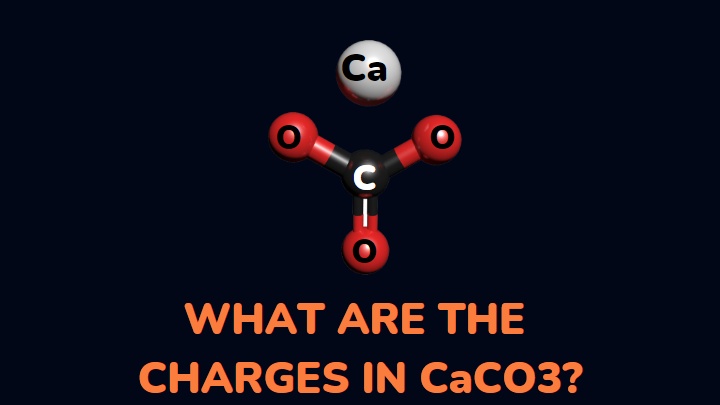CaCO3 is an ionic compound made up of two ions with unique charges. But, it is made of two ions held by an ionic bond. Just like every ionic compound, the bonds in CaCO3 are formed by electron transfer from a cation to an anion.
However, CaCO3 also contains covalent bonds within the carbonate ion. The covalent bonds are formed through electron sharing among the carbon and oxygen atoms. When the compound breaks down into its constituents, it produces ions with unique charges.
What are the charges on each ion in CaCO3? Why do the ions have these charges? Find out in this article.
What is the charge of CaCO3?
Calcium carbonate, CaCO3, is a neutral compound with no charges. The overall neutral charge is a result of two opposite charges on the metal and carbonate ion. The charges neutralize each other to form an ionic compound.
What is the charge of Ca in CaCO3?
The charge of Ca in CaCO3 is +2. Calcium loses two electrons to participate in the ionic bonding with carbonate (an anion) which gives it its +2 charge.
Moreover, you can tell its charge from the group it falls under on the periodic table. Calcium is an element in group two of the periodic table. All group two elements have two electrons in their valence shell and they readily lose these electrons to form ions.
What is the charge of carbonate in CaCO3?
In CaCO3, carbonate (CO32-) is the anion and it has a -2 charge. In this radical, the carbon atom is surrounded by three oxygen atoms. It is bound to two oxygen atoms by single bonds each and by a double bond to one oxygen atom.
The oxygen with the double bond has a neutral charge whereas the oxygen atoms with single bonds each have a negative charge. The overall charge on the two oxygen atoms gives the -2 charge on the carbonate anion.
What is the oxidation state of C in CaCO3?
We can deduce the oxidation state of C in CaCO3 by substituting the following oxidation states for all other elements in the compound.
Ca = +2, C =?, O = -2, overall charge = 0
+2 + C + 3(-2) = 0
2 + C – 6 = 0
C – 4 = 0
C = +4
What is the oxidation state of O in CaCO3?
The oxidation state of O in CaCO3 can be calculated by substituting the oxidation states of all other elements in the compound and finding the sum.
Ca = +2, C = +4, O = ?, overall charge = 0
2 + 4 + O = 0
6 + 3O = 0
3O = -6
O = -2
FAQs
What is the molecular mass of CaCO3?
The molecular mass of CaCO3 is the sum of the atomic weight of all the elements present in the compound.
Ca has an atomic weight of 40, C has an atomic weight of 12, and oxygen has an atomic weight of 16.
(40 + 12 + 3(16)) gmol-1
(40 + 12 + 48) gmol-1
= 100 gmol-1
What is the formula for CaCO3 in water?
CaCO3 does not dissolve in water. It reacts with water to produce calcium hydroxide and carbon dioxide.
CaCO3 + H2O ——–> Ca(OH)2 + CO2
The bonds between calcium and carbonate are very strong and do not break. Therefore, the compound does not ionize in water.
Is CaCO3 limestone?
Yes. CaCO3 exists as limestone. It is a sedimentary rock made of two minerals, calcite, and aragonite. These two minerals are crystal forms of solid. They come together to form limestone when they precipitate out of a calcium solution.
Conclusion
Calcium and carbonate ions make up calcium carbonate. The ions in CaCO3 have +2 and -2 charges respectively which will neutralize each other according to the crisscross rule. Hence, the overall zero charge of calcium carbonate.
Although CaCO3 is an ionic compound, it takes more than water to cause it to dissociate into its ions. The very strong bonds and lattice energy within the solid make it insoluble in water.
But, CaCO3 will dissolve in solutes like HCl to yield calcium chloride (CaCl2), carbon dioxide (CO2), and water (H2O). It also dissolves in seawater to give calcium and hydrogen carbonate ions.
You can also learn about the charge of the nitrate ion in nitrate compounds.
Thanks for reading.
